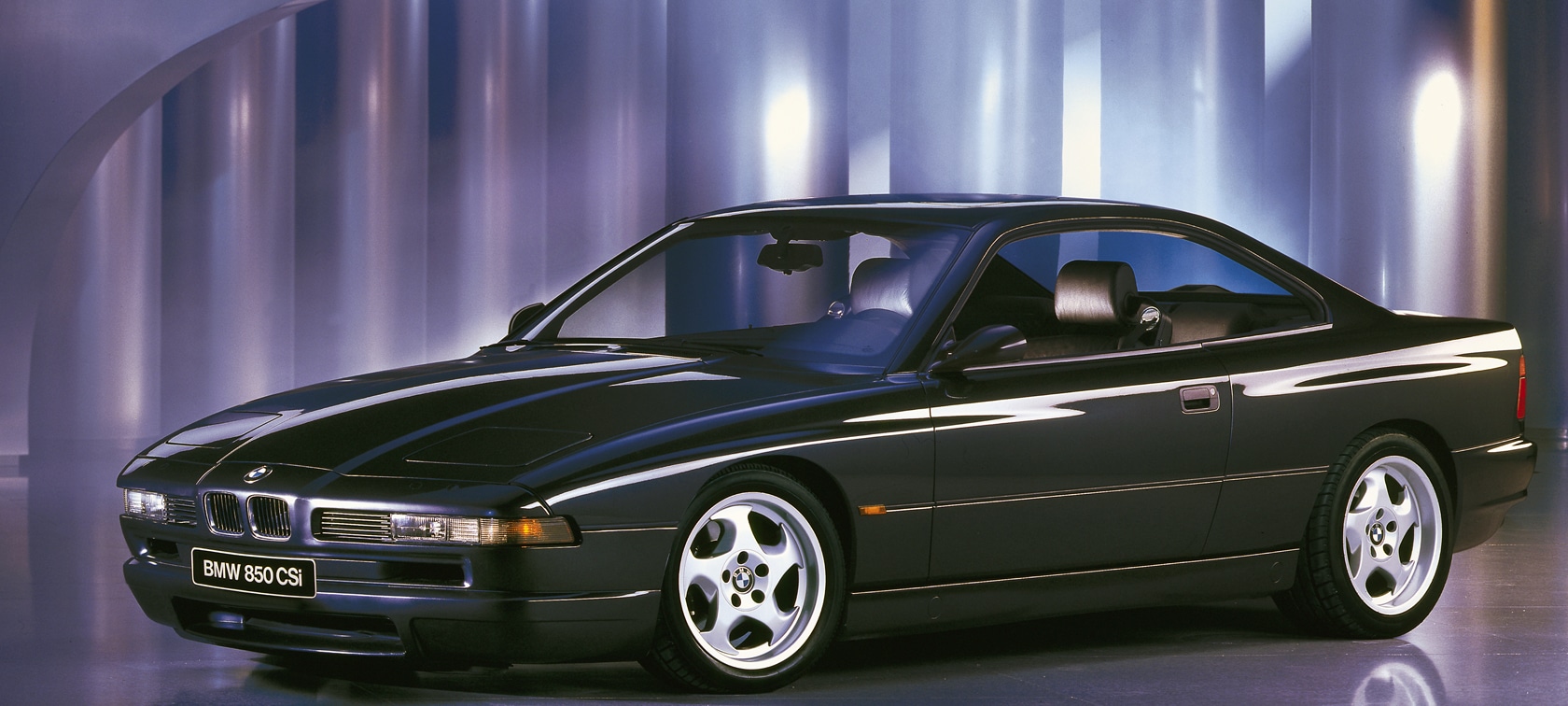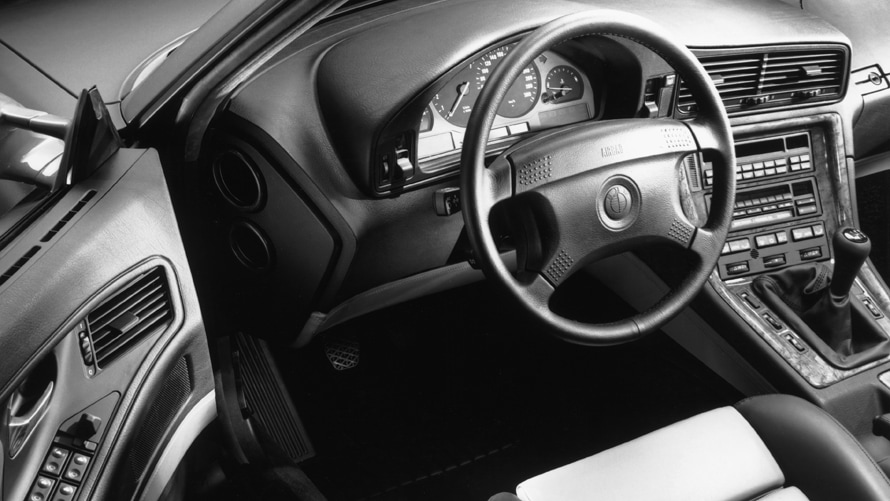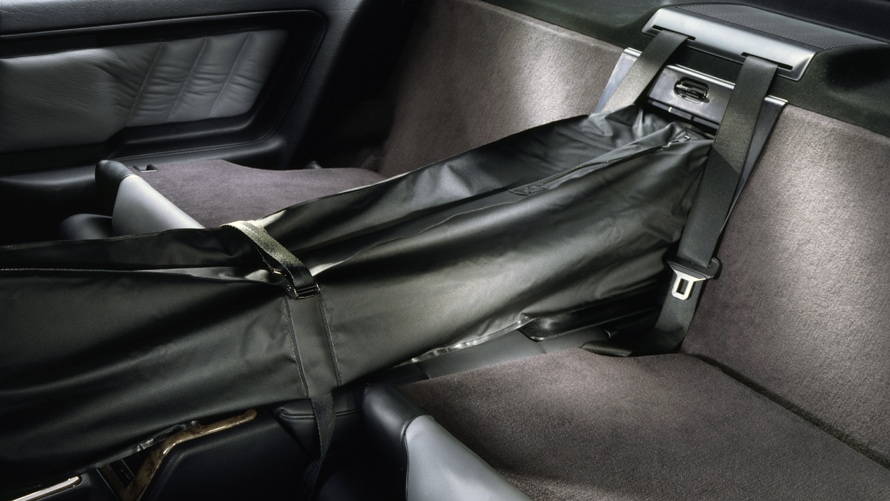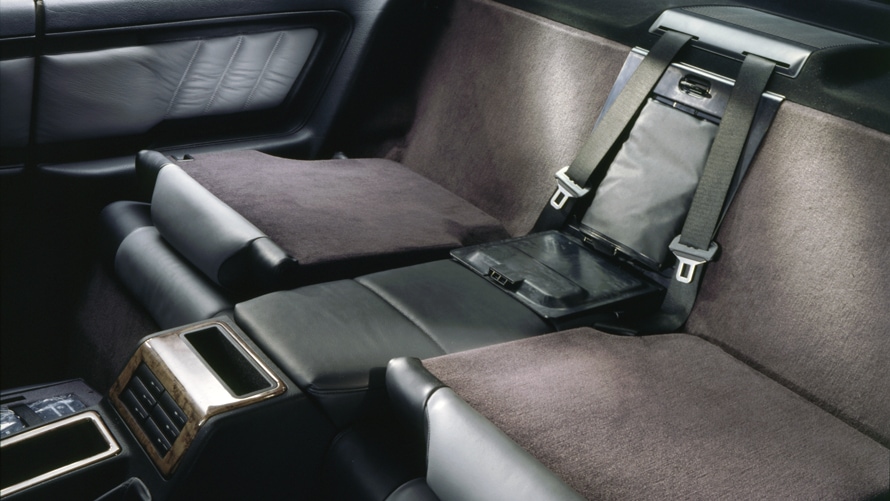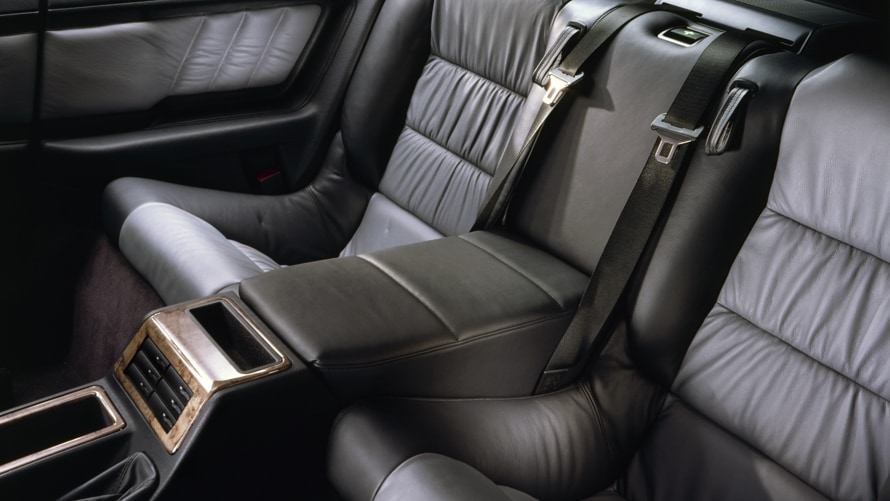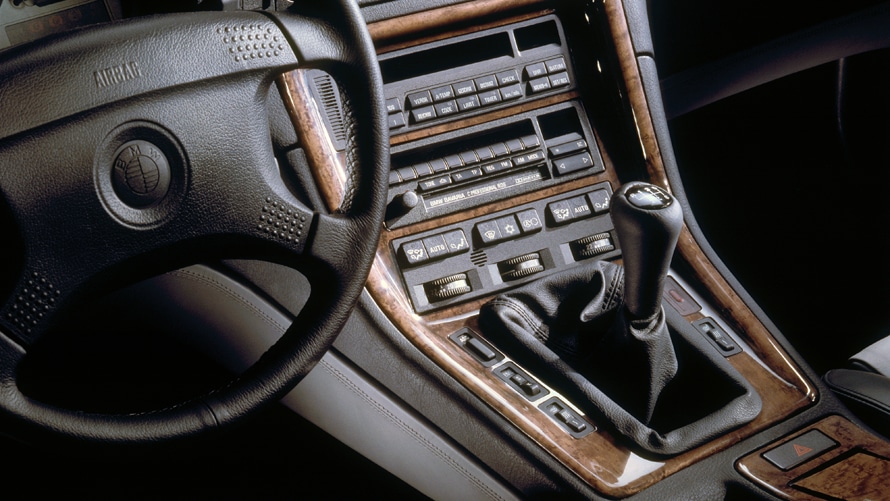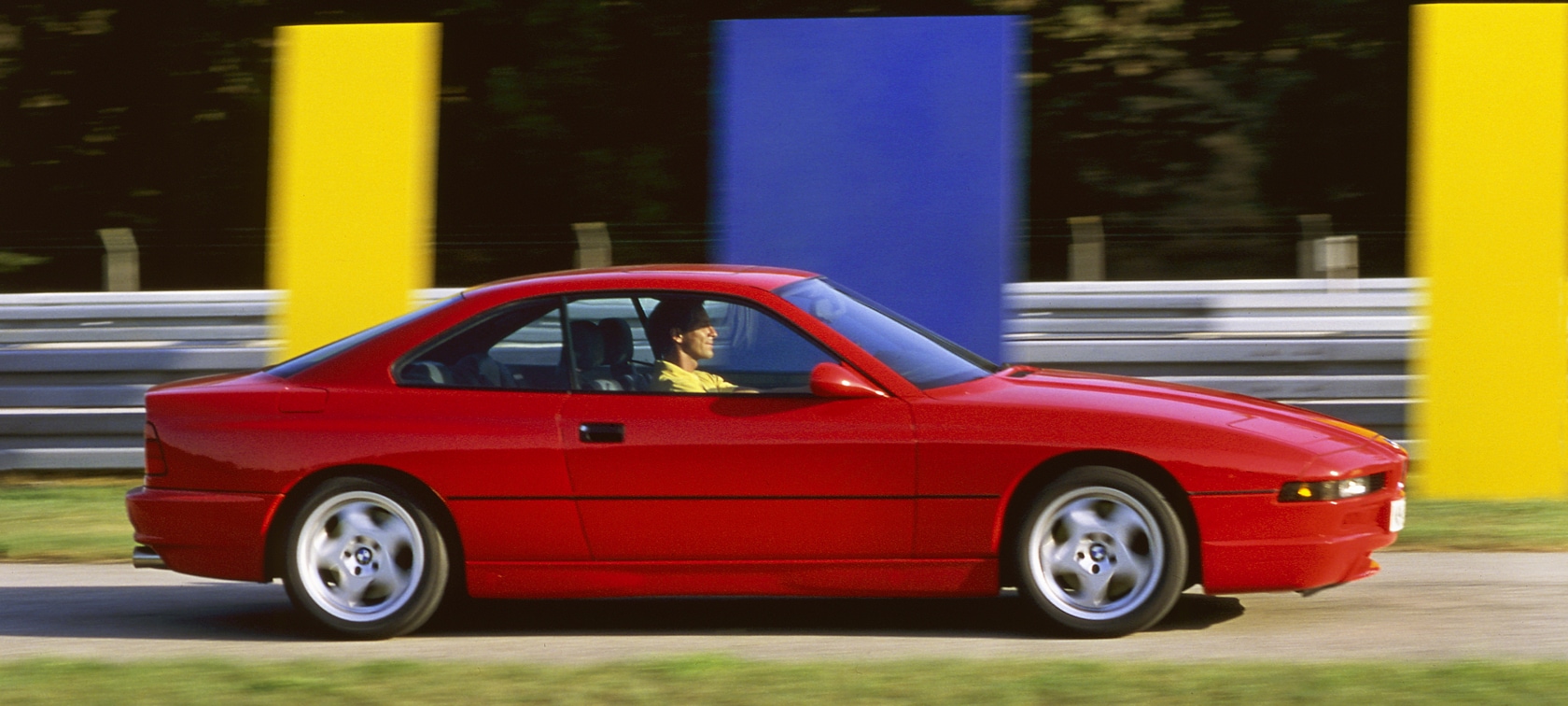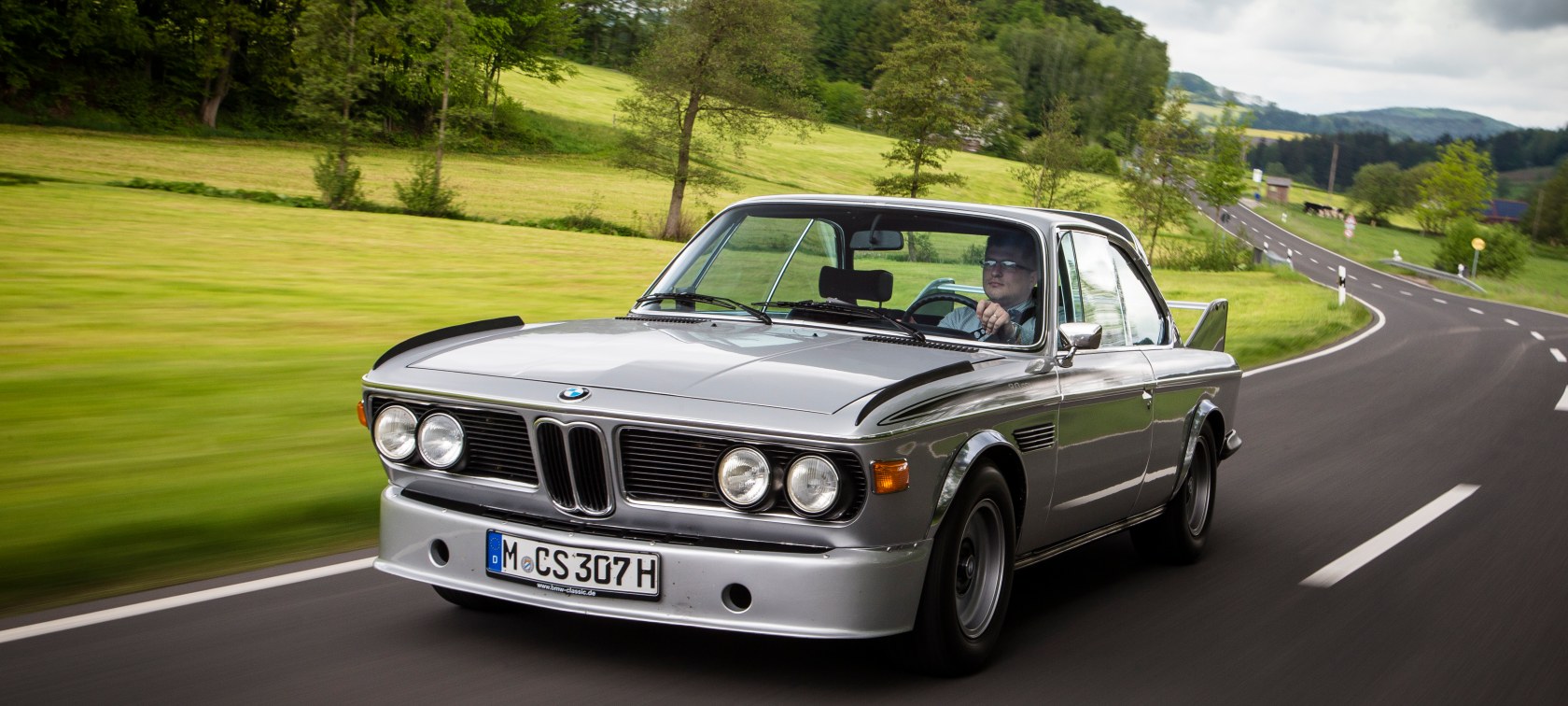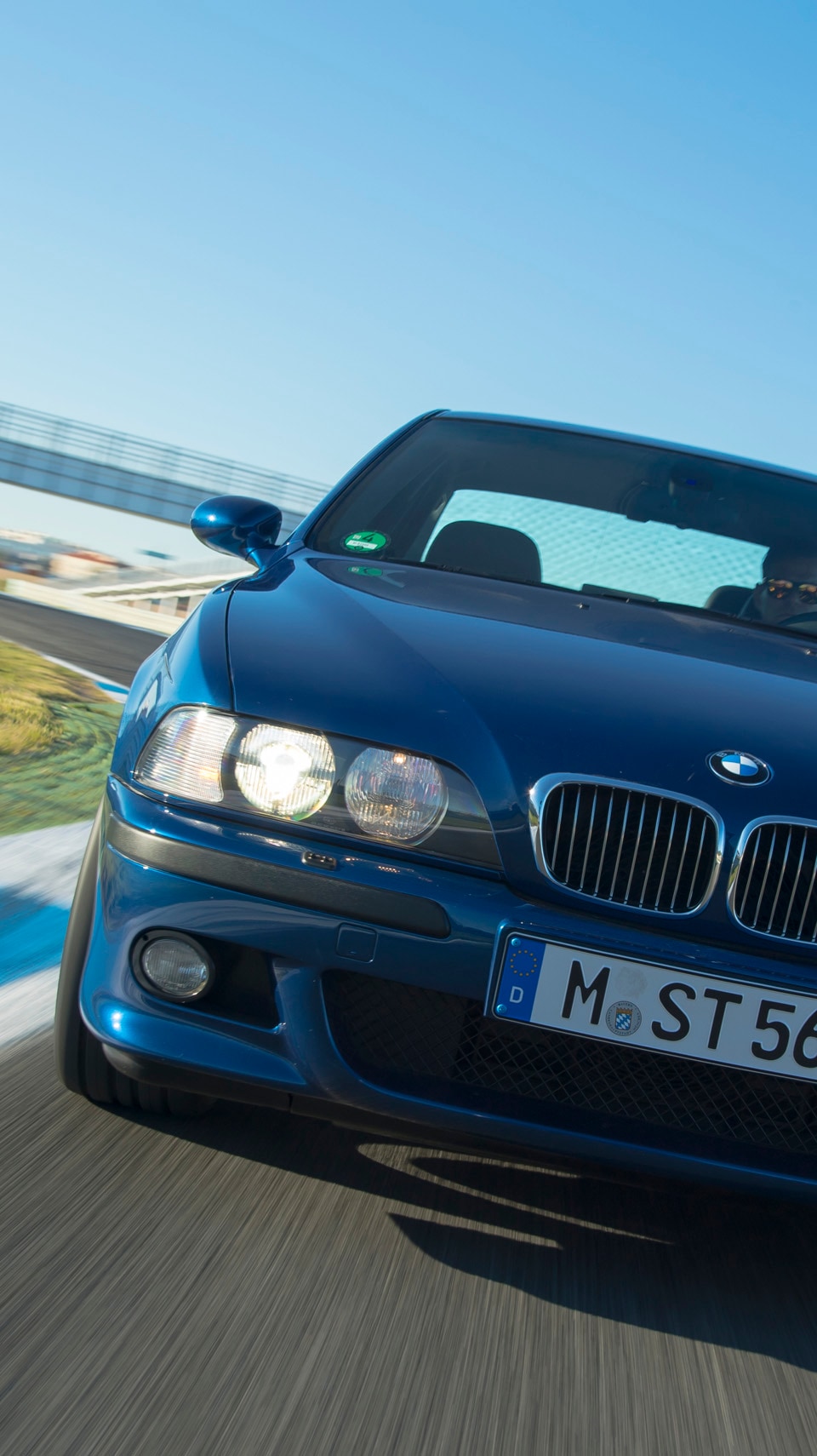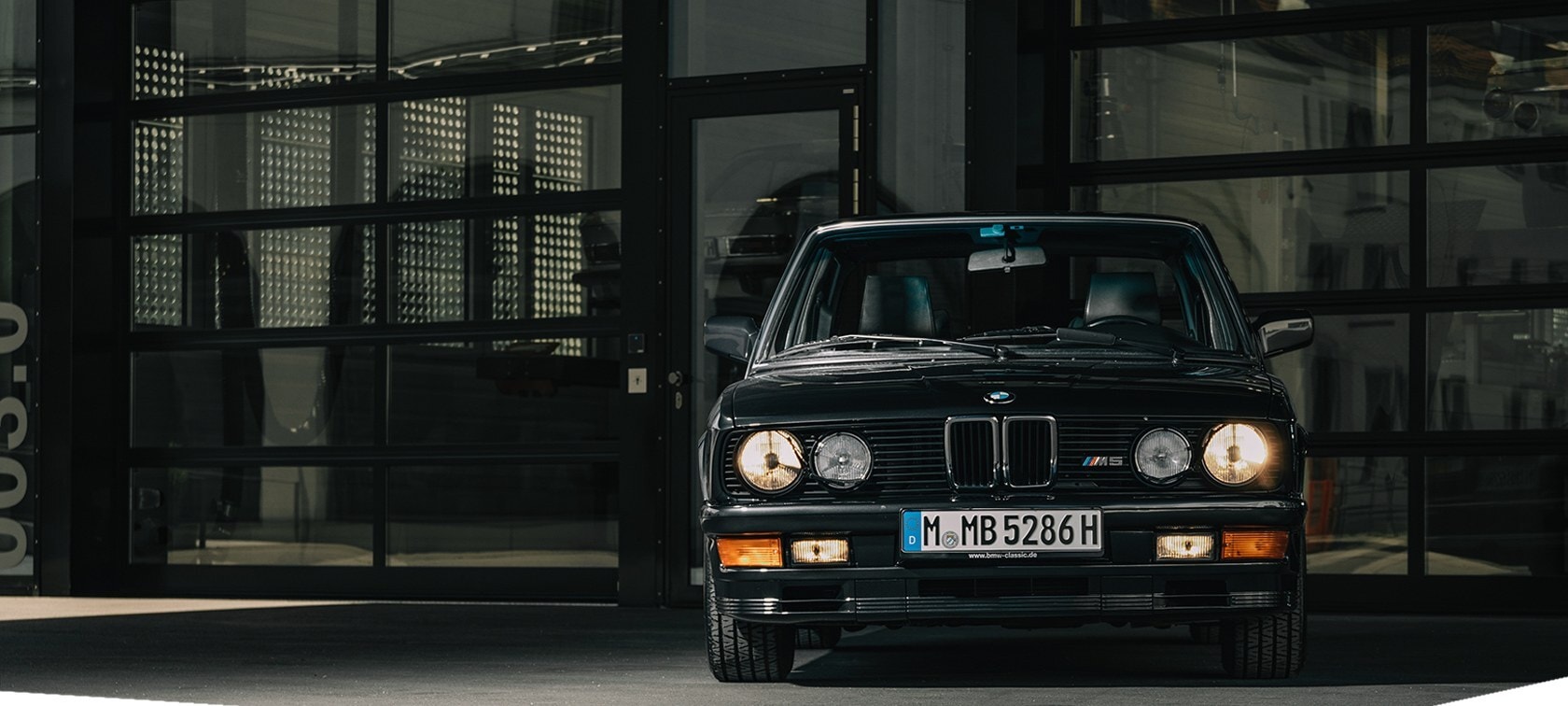Some things just can't be done over one weekend. In 1984, BMW designer Klaus Kapitza drew his first sketches of the BMW 8 Series E31 – and it prevailed against four competitors. His version became the designated E24 successor. The first deliveries of the 8 Series finally took place at the beginning of 1992. However, buyers, fans and experts still had to wait a while for the big bang. Even though it was already clear that there would be no official M8, BMW M GmbH brought tangible expertise to the development of the E31 top model under the body’s timeless design.
From late summer 1992, the production vehicle, named BMW 850 CSi, had an output of 280 kW (380 hp) and initially cost 180,000 D-Mark. The trade press of the time unanimously agreed that the stretched coupé was more understated than eye-catching. But it only underwent a few exterior changes compared to the more civilian version of the car. What’s more, numerous innovations from BMW M took place under the bonnet, making the model – at least unofficially – a small M8. The character was uncompromisingly sporty yet comfortable, more reality than appearance.

The standard driving dynamics system ensures a steering and driving precision that previously seemed unattainable.
5 POWERFUL FACTS:
- The top model of the BMW 8 Series E31
- Twelve-cylinder engine with a displacement of 5,576 ccm
- Max. output: 280 kW (380 hp)
- 0 to 100 km/h in 6.0 seconds
- Units produced: 1.510

FROM SPORTY COUPÉ TO SPORTS CAR.

FROM SPORTY COUPÉ TO SPORTS CAR.
The transformation of the elegant coupé into a thrilling sports car involved far more assemblies than a superficial comparison of the ordinary 8 Series and the 850 CSi would suggest. The technical basis of the BMW 8 Series E31 was largely the BMW 7 Series E32, which was already available in 1987 with the 5.0-litre twelve-cylinder engine (M70).
BMW M started working on this engine years before its market launch: The team increased the bore by two millimetres and the stroke by five millimetres in the 300 hp unit, which was not a weak one in any case. The result was that this M70 was now called the S70 - and had a displacement of 5.6 litres instead of the standard 5.0 litres. With an equally increased compression ratio, the power output was now 380 hp. Lightweight aluminium-based pistons and ferrostane coating reduced the necessary forces, while modified timing improved the power delivery.
200 KM/H IN 20 SECONDS.
At the time, its performance was second to none: it took just six seconds to reach 100 kilometres per hour from a standstill, and 200 km/h was reached 14 seconds later. The engine electronics limited the top speed to 250 kilometres per hour. An engine oil cooler, which was only installed in the BMW 850 CSi, ensured optimum operating conditions at all times, even under extreme driving conditions. The engine, developed exclusively for the 850 CSi, is covered by a sound-absorbing bonnet bearing the M logo - and thus unequivocally identifying who was significantly involved in perfecting this power unit.
TECHNICAL DATA BMW 850 CSi E31.

TECHNICAL DATA BMW 850 CSi E31.
Engine: 12-cylinder V-engine
Displacement: 5,576 cc
Output: 280 kW (380 hp) at 5,300 rpm
Torque: 550 Nm at 4,000 rpm
Transmission: manual 6-speed gearbox
Top speed: 250 km/h (electronically limited)
Curb weight with fuel: 1,865 kg
Tank capacity: 90 litres
Length: 4,780 mm
Width: 1,855 mm
Height: 1,330 mm
Wheelbase: 2,684 mm
Detached from the reality of everyday motoring.
LEADING-EDGE TECHNOLOGY.

LEADING-EDGE TECHNOLOGY.
But the engine was just the beginning. With modifications to the exhaust tract, BMW M approached the best possible compromise between performance, consumption, and noise levels. In the end, the four-pipe exhaust system was given pre-pipes with an enlarged cross-section of three millimetres and two special metal catalytic converters, which reduced the back pressure while maintaining a compact design.
Another technical highlight of the 850 CSi was the co-steering rear axle, which turned up to 1.8 degrees depending on the driving situation, thus allowing a previously unimagined degree of cornering dynamics. This made the steering system, known as Active Rear Axle Kinematics ("Aktive Hinterachskinematik", AHK), one of the first on the market and a technology that is still used in some models today.

SOPHISTICATED ELECTRONICS.

SOPHISTICATED ELECTRONICS.
Drivers of the 850 CSi also felt the benefits of the convenience of electronic control components, which were still in their infancy at the time. Thanks to the electronic engine performance control (EML), they could choose between the K (comfort) and S (sport) characteristics using a toggle switch. Accordingly, the engine responded more or less directly to the position of the accelerator pedal. The full power of 380 hp was available in both cases. The EML also took care of the gear-dependent rev limiter for the manual six-speed gearbox and the adaptive idle point detection exclusively in the 850 CSi without any driver intervention.






OPTIMISED DOWN TO THE SMALLEST DETAIL.
The example of the hot-wire mass air flow sensor shows just how much detail the engineers went into when developing the top-of-the-range E31 model. Its wide-meshed plastic grid had a lower flow resistance and was equipped with shortened and vibration-optimised platinum wires. To burn the hot wire of the system and ensure it was free of deposits, it was also given a short, targeted current surge when the engine was switched off.
Every component of the already sporty coupé was scrutinised for potential improvements, no matter how small. For example, the rear axle gearbox had a separate oil cooling system to withstand even the highest loads. For more agile handling, the steering was given an adapted gear ratio, and the rear axle was given a particularly sporty design with 20' toe-in and -1°23' camber.
EXCITINGLY SIMPLE.
Not everyone immediately liked the adaptations of the BMW 850 CSi compared to the other variants, especially when it came to the new technical aspects. Critics missed the contribution of BMW M, which was recognisable to the naked eye. In this model, it is in fact rather subtle, for example in the interior with the red pointers in the cockpit and the aforementioned EML toggle switch in the centre console. From the outset, however, it is precisely this restraint that makes the 850 CSi so appealing: It is far more than it appears to be at first glance.
HOW TO IDENTIFY A 850 CSi.

HOW TO IDENTIFY A 850 CSi.
The BMW 850 CSi is also clearly distinguishable from the other variants in the series from the outside: At 345 millimetres, the larger and slightly thicker brake discs are perhaps only recognisable to experts, while the revised front and rear aprons by the then exterior designer Ulf Weidhase - with an eye-catching diffuser - as well as the aerodynamically optimised M exterior mirrors painted in body colour are a clear giveaway even to the less experienced observer: This can only be an 850 CSi.
BMW ART CAR #14.

BMW ART CAR #14.
In 1995 British artist David Hockney also developed an enthusiasm for the 850 CSi. After several months of preparation, he transferred his design for the 14th BMW Art Car from a scale model to a US version of the 850 CSi. The suggestion of steering and driver on the front left door is particularly striking for his work. As a thank you, the artist received an 850 Ci.
The fact is, however, that there is currently no better handling car of comparable calibre.

DISCREET PERFECTION.
All in all, there is no doubt that the 850 CSi would not have become the vehicle it is without M innovations. It a technologically highly innovative sports car that nevertheless exercises restraint.
From 1992 to 1996, 1,510 units of the 850 CSi were built, including some pre-production models as well as 160 right-hand drive models and 225 vehicles in the US version. The range is correspondingly rare today. As the US versions were delivered without the aerodynamically optimised M exterior mirrors, the transmission oil cooling system and the additional engine oil cooler, for example, they are only a limited alternative for purists. On average, you can expect to find around a handful on offer, with prices for technically flawless and worthy examples close to the original 1992 price.
In view of the price development in recent years, however, this should still be a good investment in one of the most objective, but never undercooled models in M history.

